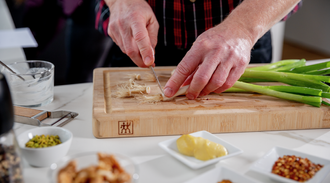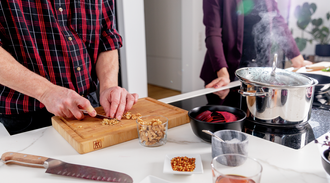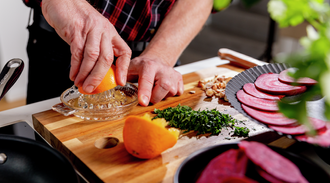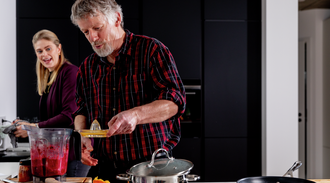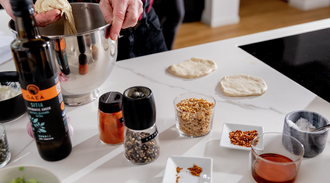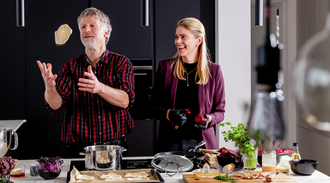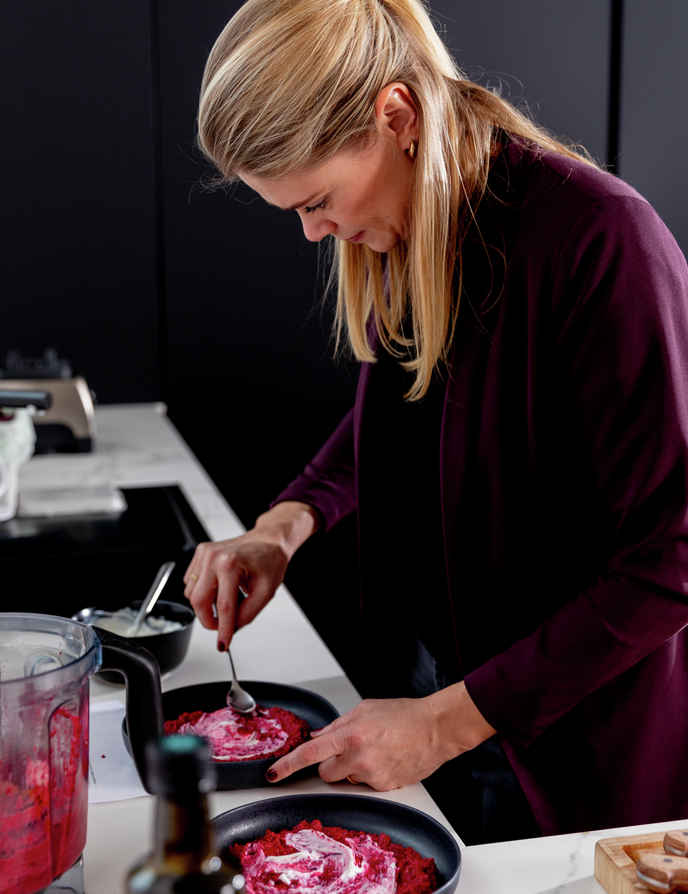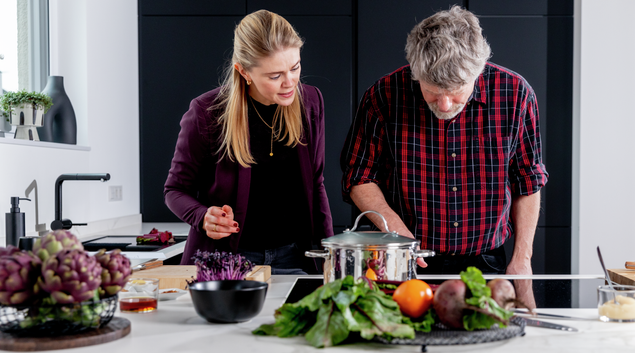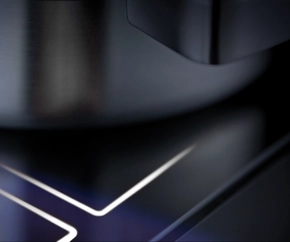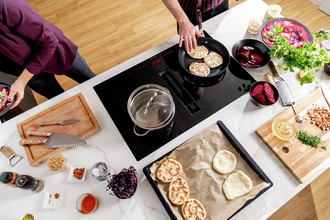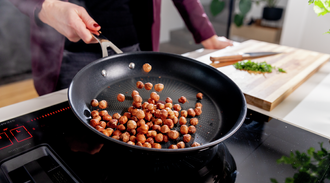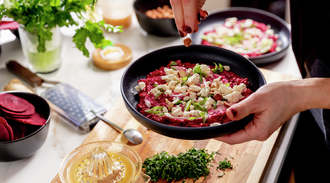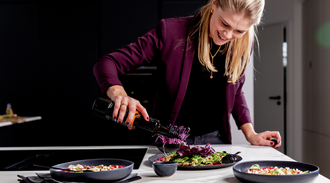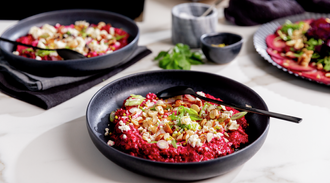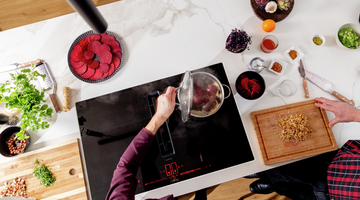
Freshly spiced
What do a researcher and a food blogger have in common? They are both constantly on the lookout for new and improved recipes. But how do they make them happen? We discuss it over dinner.
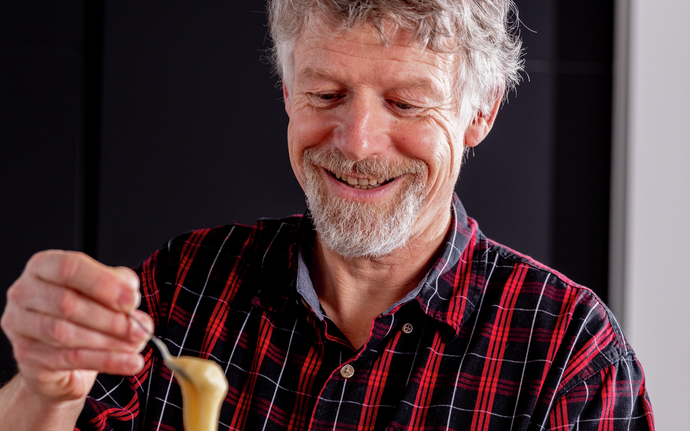
Martin works in materials development at SCHOTT, working with glass and glass-ceramics. But today, the hobby beekeeper has invited people to have a taste of his home-grown honey. In his spare time, Martin produces around 100 kilograms of honey a year, but what links his hobby with his job? “Making glass is like cooking and making glass-ceramics is like honey production,” he explains, clearly enjoying the connection.
Twin talents at the stove
Today, Martin is not working in the lab. Instead, he’s in an elegant kitchen. In the middle of the spacious work area is a black glass-ceramic CERAN® cooktop from SCHOTT. Indeed, most of the kitchen is black – even the faucet and the sink.
Joining Martin is Tanja Farwick, a food blogger from Münster, Germany who has been taking a close look at the honey connoisseur’s actions. “We could also make it more liquid with vinegar and oil,” suggests the hostess of this highly unusual cooking session. Martin nods. “But honey isn’t in the recipe at all,” he wonders. “In cooking, you have to be prepared to do something crazy,” replies Tanja. “Developing a new recipe takes courage and creativity.”
Martin smiles. He understands this from his experience in glass development. The main difference is that more can go wrong in the process of glass melting than in the preparation of carpaccio dressing. The honey pairs perfectly with the orange juice, olive oil, balsamic, and agave syrup. “Sweet flavors are always good,” Tanja says, stirring everything together. Martin has a taste and says, “I would add a little pepper.” Tanja nods. The dressing is done.

While Tanja has the home advantage in the kitchen, the live talk with Martin is unusual for her. Preferring the description chef-entrepreneur to influencer, she is also an accomplished food photographer. Despite saying “I’m neither a trained cook nor a photographer,” it’s with both skills that she earns her living. As part of the food blog Foodistas, she is creative, has a good feeling for flavor combinations, and is overflowing with ideas – as one glance at her Instagram channel makes clear. Developing new creations is everyday life for her, and she posts new recipes twice a week. However, learning how this relates to glass development is new territory.
Who are the Foodistas?
Behind the Foodistas are Carina, Tanja, Jasmin, and Tine, two pairs of sisters from Osnabrück, Münster, and Mainz, Germany. Since 2014 they share their passion for food and traveling, because cooking and baking are a matter of the heart for the quartet. They develop recipes with a focus on seasonal and regional cuisine, and publish them primarily on their blog www.foodistas.de. For SCHOTT, Tanja developed three unusual recipes, cooked them together with a glass expert, and discovered a lot of similarities.
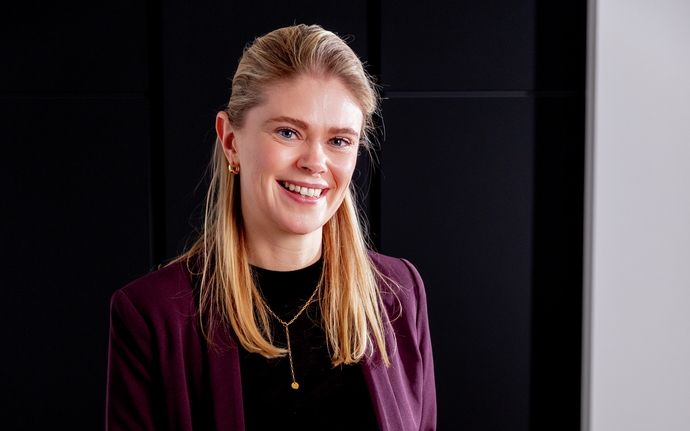
The journey to the recipe
The search for a new recipe always begins with an inventory. For Tanja, it’s a look at her cookbook collection, a trip to a restaurant, then sharing the recipe with friends and her three fellow bloggers. “You start from tried-and-true recipes and modernize them,” Tanja explains.
Today, that means that the carpaccio is made from beet, feta, arugula, and walnuts, with the dressing already mixed with Martin’s honey.
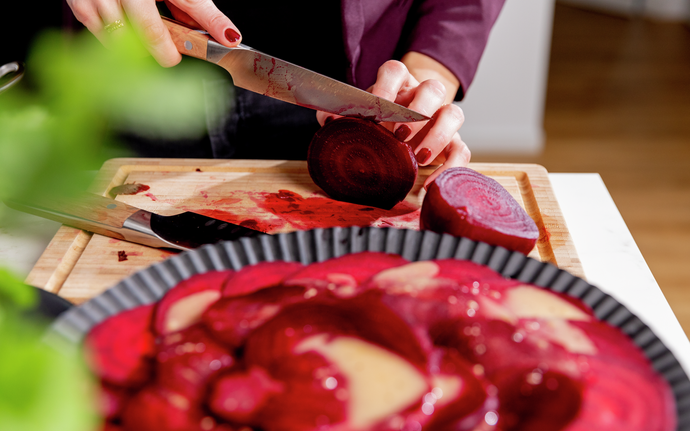
Martin has cooked the beet and then cut it into thin slices. But the food expert pulls a joker, adding a few raw slices to the carpaccio – a crunchy surprise. “We don’t stay static with our recipes,” Tanja says. “We leave a lot less to chance in glass development,” laughs Martin.
While cooking is almost all about the flavor, glass requires a deep understanding of chemistry and physics, and many other considerations in its development. A new glass recipe starts with a specification, which means a large dose of theory. What does the glass need to do? What properties need to be ruled out? What role does uncontrolled crystal formation play, and how can it be prevented? Which process properties are important? In cooking terms: vegetarian or meat, Italian, or Asian, will the bread fit in the oven or is a bigger one needed? If the new oven is too expensive, perhaps flour from a new grind could be the answer?
“The better I know my existing data and requirements, the more likely I am to end up with a good product,” Martin says. For him, the most important sources of information at the beginning of each glass recipe are a well-maintained database, including every new trial melt, old binders, patent collections, and the expertise of all SCHOTT teams. Figures underscore just how crucial this preliminary research work is: Only around one in 20 development projects is ultimately successful.
How are glass-ceramics produced?
According to the typical methods in glass technology, glass is first melted from suitable raw materials, refined, homogenized, and finally hot-formed. After the glass blank has cooled and relaxed, a heat treatment follows in which it is transformed into a glass-ceramic by controlled volume crystallization. Inside, substances already added to the melt now form tiny seed crystals, on which high quartz solid solutions grow as the temperature rises. These contract when heated, counteracting the thermal expansion of pure glass. In this way, the glass-ceramics from SCHOTT can withstand temperature shocks of several hundred degrees Celsius without shattering. Learn more
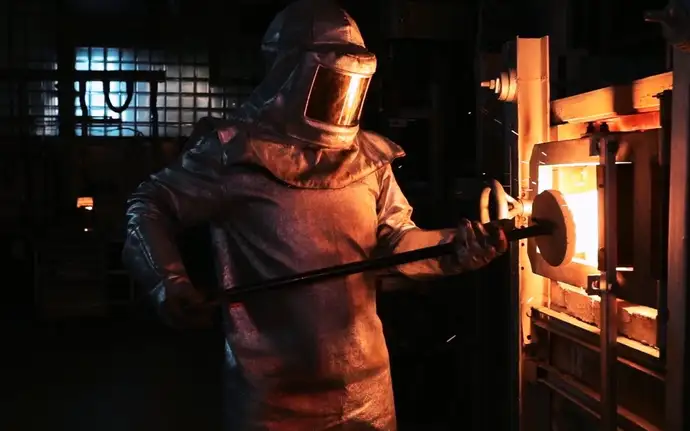
Trials and procedures
Back in the kitchen, Tanja and Martin are chatting enthusiastically. The food blogger explains how she came up with the idea of making hummus from beets: “I mean, why not? I didn’t like beets before, so I had to prepare them in a way that I liked.” As with many succcessful recipes, this was a creative process that had many trials until Tanja finally reached her goal. In this case, Greek yogurt, date syrup, garlic, and chili flakes helped the most. Martin tries her puree and is thrilled. “It’s got an Asian flavor,” he says. Tanja grins. “That’s because the zaatar spice blend gives it an exotic taste.”
In food, sometimes the little things make all the difference – something that’s also true in the lab. Mixing things together, trying them out, and then refining them is something Martin understands from his day job. In contrast to experimenting on the stove, he approaches a new glass recipe much more systematically, using two main methods – straightforward and experimental.
With the straightforward method, Martin relies on the existing knowledge at SCHOTT and his experience. If, for example, only the refractive index or melting temperature of an optical glass needs to be changed, he knows exactly what adjustments can be made.
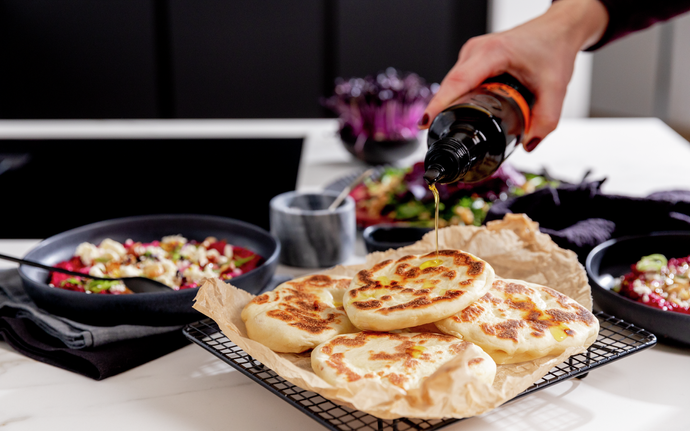
A key tool for this process is a phase diagram. Used to illustrate states and their associated phases in materials development, it can set the components in an effective relationship and demonstrate the effects of adjusting the recipe. “We do 100 test melts to figure out the one we can use,” Martin says, “but the other 99 still took me somewhere because I learned from them.”
But in many developments, research teams are also breaking new ground. With design-of-experiments (DOE), they rely on statistical experimental design and the power of simulation. The systematic procedure helps determine the relevant influencing factors for a product from a large number of parameters. With the aid of an experimental design, these factors are varied largely independently of one another in order to derive their effects on the target variables and thus a cause-and-effect model. In the case of glass development, there are between seven and 15 dimensions that have to be taken into account.
Finally, the computer calculates a mathematical model that can be used to simulate new compositions and their properties. Only the most promising glass recipes are then replicated in practice. “Otherwise, it would be like trying to figure out an optimal baking temperature by putting the dough in the oven at a temperature one degree higher each time,” explains Martin.
A periodic table of possibilities
Experience also has a big role at the stove and in the lab. Sometimes, however, chance surprises become theory, and the foundation for a new glass-ceramic is laid almost incidentally. Glass-ceramics expert Friedrich Siebers pursued an observation with a great spirit of research. He wanted to know exactly where certain components of a new coloration would accumulate, so he conducted some tests and got a gray appearance in some places. This became the basis for the development of the next generation of glass-ceramic, which enables bright, clear, and true-color lighting solutions for the cooktop. “The initial spark was coincidence, but we then followed the develop with hard work and a lot of sweat until it became a finished material,” Martin recalls.
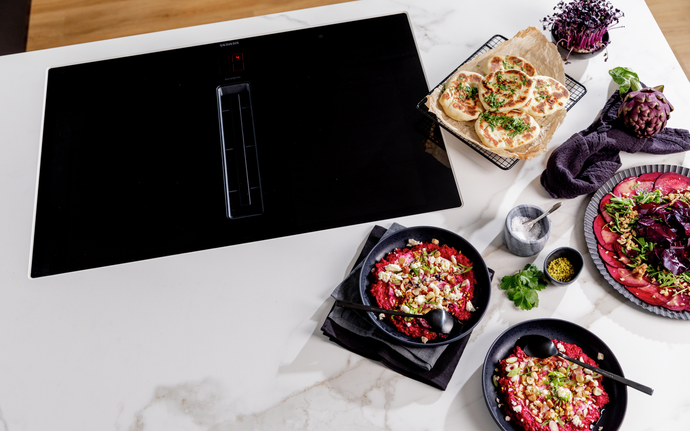
The glass-ceramic manufacturing process offers several optimization approaches, especially in the ceramization step. “For example, I can reach my target temperatures at different speeds in the temperature programs, or I can vary the height of a temperature level,” explains Martin. “This allows me to make extremely significant changes to the properties of the glass-ceramic.” The result, he says, is either a transparent material or, by using higher temperatures, an opaque one. “It’s like baking bread,” he says. “If a dough is baked longer, the end result is not fluffy naan, but crispbread.”
The new glass-ceramic is just one example of how SCHOTT continues to reinvent a material. And there is no end in sight. “We have half the periodic table at our disposal for improvements and new developments,” says Martin. “If you take an existing system and throw in another component, you get something completely new.” That, he says, is the great appeal of glass and glass-ceramic. In the context of cooking, salt helps seasoning, but can also change properties and preserve food. Small cause, big effect – something Tanja also understands. She chops a handful of hazelnut kernels and toasts them briefly in the pan. Together with freshly grated horseradish, she uses them to refine the beet hummus, and dinner is served. “Trial and error is important,” Martin grins. “Especially if it’s this delicious.”


